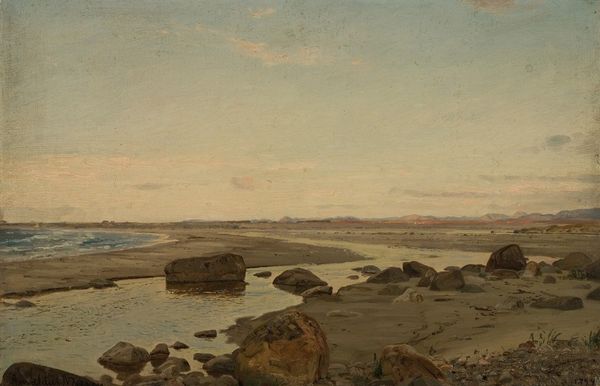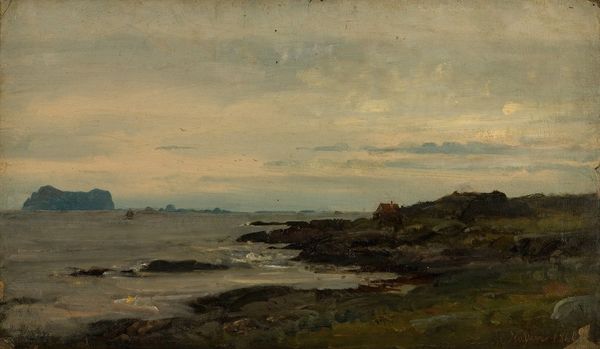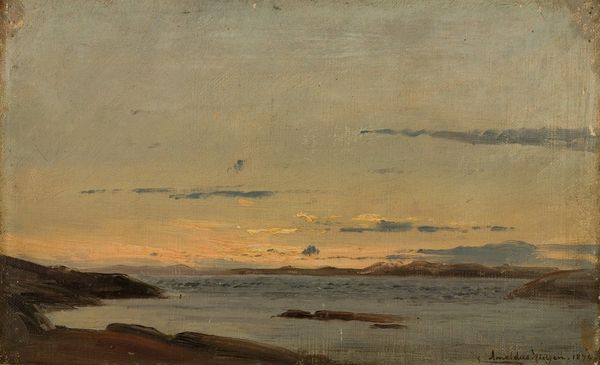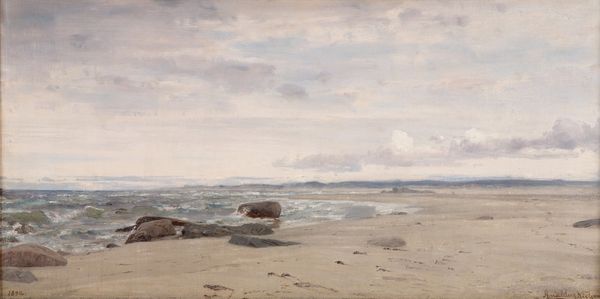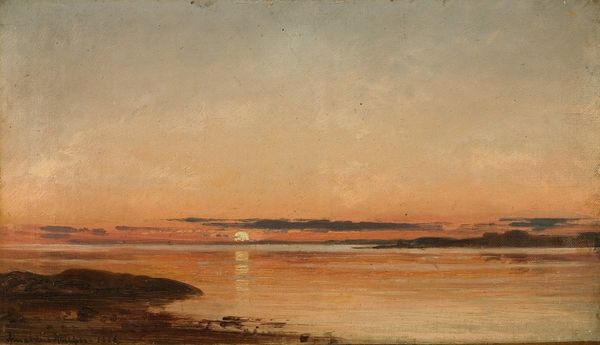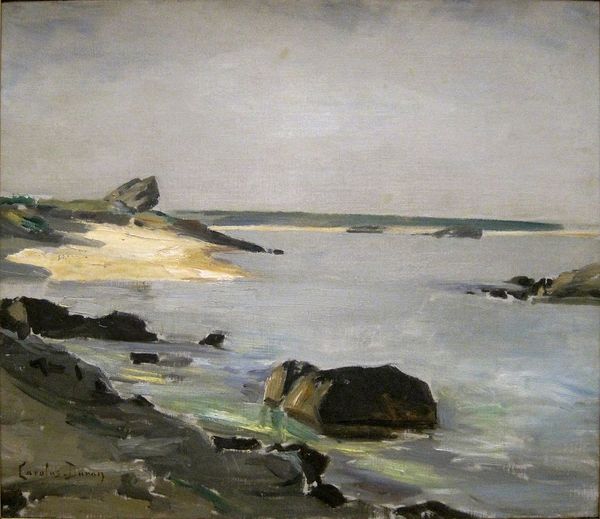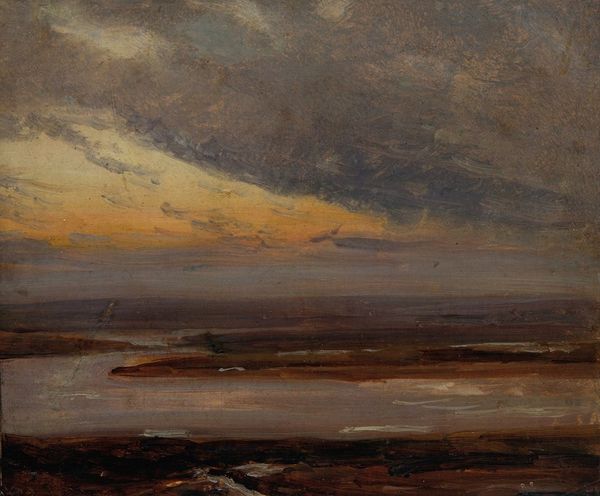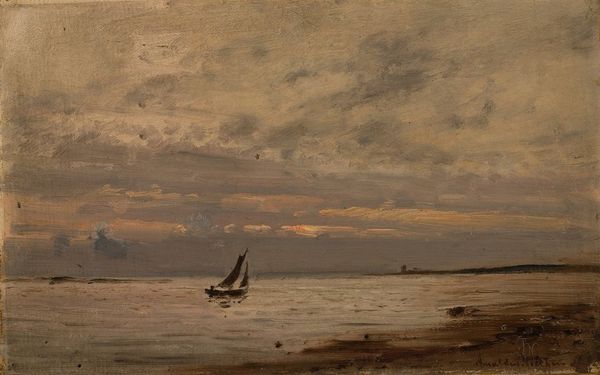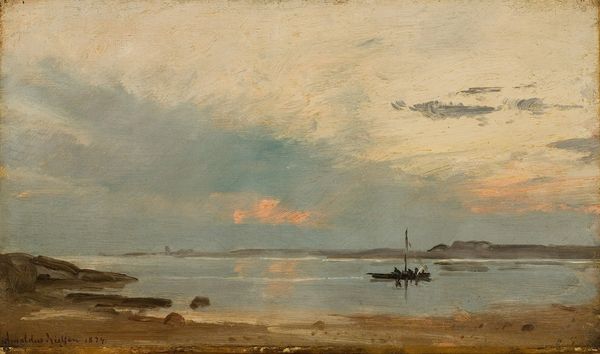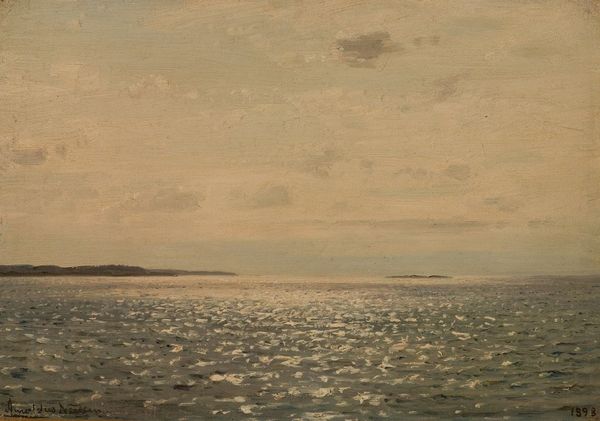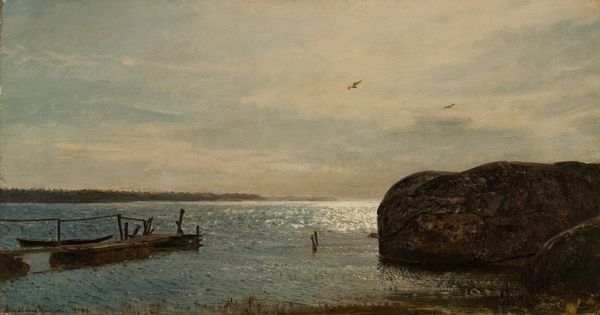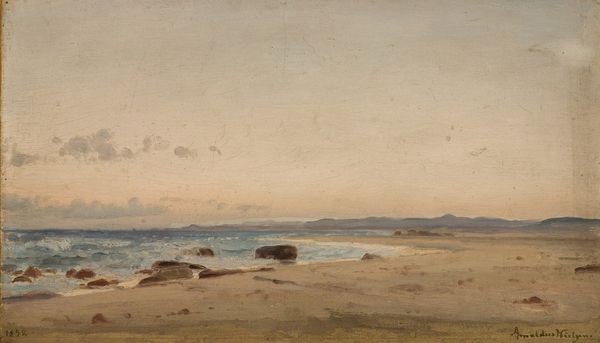
Copyright: Public Domain: Artvee
Curator: This is Amaldus Nielsen’s “Aften ved Hvaler,” painted in 1874. It's an oil-on-canvas landscape showcasing an evening scene in Hvaler, Norway. Editor: Immediately, I am struck by the light, almost shimmering across the water's surface. There's a melancholic quietness, a sense of transition between day and night. Curator: Exactly. Nielsen’s piece reflects a rising interest at that time among artists, capturing transient light conditions outdoors—the famous ‘plein air’ painting. We must acknowledge how these paintings required the industrial production of transportable paints. Editor: Right, and it reflects broader societal shifts, a turn towards Romantic ideals of nature as a space of sublime experience—something only afforded by the burgeoning middle class with leisure time. Who exactly has access to these views, and who benefits from the image they represent? Curator: Well, Nielsen focuses on capturing the effect of light, using broken brushstrokes to give the water its reflective qualities. He shows a remarkable technical skill by recreating natural effects through materiality. Notice the layering of the paint! Editor: But those figures in the boat… they feel small and somewhat anonymous against the vastness of the seascape. What stories do they carry? Considering that it depicts a particular locale at sunset raises important questions. Does this mirror society's understanding of their place within larger forces, like nationhood or perhaps religious ideology? Curator: The composition pulls together various aesthetic ideas. One foot in the Realist camp, he captures the specificities of place while leaning into more Romantic atmospheric tones. You'll notice here he uses the horizon as the focus and the sky creates balance. The craftsmanship employed creates atmospheric light and the material reality of the sea. Editor: Yes, and let’s remember that Romanticism often veiled power dynamics, class differences, and colonial ventures under the guise of beautiful landscapes. It behooves us to unpack those implications. This piece is also so fascinating because it can open broader societal questions like migration. Curator: Thinking of Nielsen’s dedication to material realism along with plein air approach emphasizes an intimate connection to Hvaler and, broadly, his environment and work in bringing his impressions into the studio to produce the painting itself. Editor: Right. It pushes us to contemplate those complex relations and representational strategies within the historical moments of its production. Curator: This exploration of his painting leaves me reflecting on artistic ambition alongside industry. Editor: For me, I see a poignant commentary on how individual stories nestle within a larger cultural landscape.
Comments
No comments
Be the first to comment and join the conversation on the ultimate creative platform.
